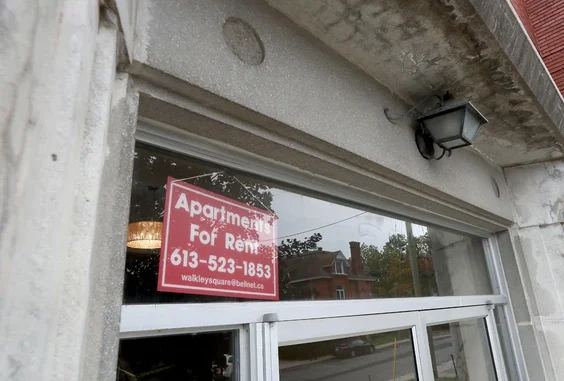
The rental markets in the United States and Canada cannot be more dissimilar, especially when it comes to apartment rents, which have fallen in most U.S. cities, while spiking across Canada.
U.S. renters “with new leases in January paid a median rent that was 3.5 per cent lower than they would have paid last August,” the Wall Street Journal, using data from Apartment List, reported. Rents have fallen every month over a six-month period for the first time in five years.
By comparison, rents in Canada have been rising quickly. Year-over-year rent increases for one-bedroom apartments were 24.2 per cent in Vancouver and 20.8 per cent in Toronto, according to Rentals.ca data. Even in less populous cities such as Kitchener and London in Ontario, rents for one-bedroom apartments were up by more than 25 per cent.
The average annual increase across major rental markets tracked by Rentals.ca was about 15 per cent for one-bedroom apartments and 14.4 per cent for two-bedroom apartments.
The worsening rental situation in Canada prompted the federal government to offer low-income renters a one-time $500 rental benefit. By late February, more than 500,000 renters had applied for the benefit, and it is estimated that an additional 1.2 million renters will also apply.
Despite similar demographics and economic structures, the drastically different rental markets in the U.S. and Canada may be explained by the differences in their respective rental housing supplies. Whereas rental housing supplies have been on the rise in the U.S., large housing markets in Canada, with a few exceptions, have not had any meaningful increase in rental housing construction.
The result of this supply-and-demand mismatch has become quite apparent in Canada. Higher mortgage rates and falling housing prices have caused sales to decline since early 2022. A slowdown in the resale market meant that many first-time homebuyers extended their rental tenures for longer than they would have had the markets facilitated their transition to ownership. This resulted in lower rental vacancy rates, which have inadvertently pushed up rents in most housing markets.
However, the problem is not necessarily the higher demand for rental units; it’s Canada’s inadequate rental housing supply.
In the U.S., the Wall Street Journal cited CoStar Group Inc. data that forecasts “the biggest delivery of new supply since 1986” and that “half-a-million new apartments are coming on line” in 2023. “The crush of new apartments will give renters more choices, making it more difficult for landlords to raise rents at rates seen early in 2022.”
The recent decline in rents in the U.S. could be partly because markets reached their upper limit in rent tolerance last year, so a decline in lease renewals followed, putting downward pressure on rents.
In Canada, however, the construction of purpose-built rental housing took a nosedive in the early 1970s and has not recovered to levels commensurate with demand. Back then, 25,000 purpose-built rental units were annually completed in the Greater Toronto Area (GTA), according to a recent report by Building Industry and Land Development Association, an industry group representing the development industry in the GTA, but less than 5,000 rental apartments came on line in 2022.
The decline in rental construction is even more dramatic when you note that the earlier higher supply of rental housing was for a much smaller population base in the GTA, whose population has significantly increased since the early 1970s.
Of course, housing affordability is a more significant concern for low-income renter households than homeowners or those aspiring for homeownership.
For example, renters in the GTA were two to three times as likely to be in core housing need (a metric for housing affordability) than homeowners, according to a recent report by the Centre for Urban Research and Land Development.
The federal and Ontario governments have recognized housing supply as the prime culprit behind worsening affordability. The governments have since identified the need to build millions more homes than what would have been built under business as usual.
It would be wise to target subsidies and incentives to produce affordable rental housing first, so that the shelter needs of those most vulnerable can be met sooner.
Murtaza Haider is a professor of real estate management and director of the Urban Analytics Institute at Toronto Metropolitan University. Stephen Moranis is a real estate industry veteran. They can be reached at the Haider-Moranis Bulletin website, www.hmbulletin.com.
Source: https: financialpost.com



